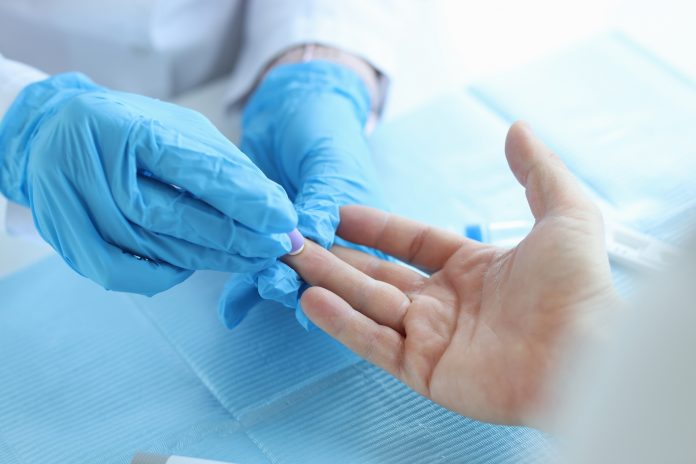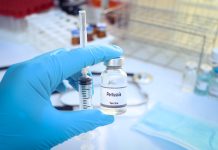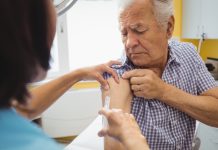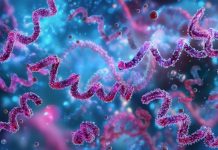Innovative finger sweat test provides patients with a more comfortable and non-invasive way to monitor antipsychotic drug levels
Antipsychotic drugs help highly vulnerable patients. Many patients find it difficult to stick to their treatment plan, but not taking prescribed medicine is associated with a higher risk of poor health outcomes.
Due to how powerful the drug is, the side effects are considerably stronger. Blood tests are commonly used to adjust dosages and ensure patients follow prescribed amounts.
Blood tests, however, can be invasive and uncomfortable for many people.
Researchers have recently found a new method of measuring the levels of antipsychotic drugs from the patient’s finger sweat. Offering a more convenient and comfortable way of monitoring patients’ blood.
“Our test offers patients a quick and dignified way of showing commitment to antipsychotic treatment,” said Katherine Longman of the University of Surrey, first author of the study in Frontiers in Chemistry.
“This non-invasive approach can also be adapted to fit other therapeutic regimes.”
The scientists were already aware that certain drugs could be identified through the sweat of a fingertip. This will eliminate the need for specialist personnel and offer a simpler storage solution than blood storage.
Determining drug dosages through finger sweat
To determine whether antipsychotic drugs could be detected in sweat, they enlisted 60 patients undergoing clozapine, quetiapine or olanzapine and 30 negative controls.
11 patients taking clozapine consented to provide blood samples, enabling a comparison between indicators in finger sweat and blood. Patients were asked to report their dosage and the most recent dosage taken.
The team of researchers gathered samples before and after hand washing, as hands that have been washed are considered to give a clearer view of the eccrine sweat that comes off fingertips. The patients pressed their fingertips against a porous paper for 30 seconds. These liquids were later collected and examined using chromatography-mass spectrometry.
Corresponding author Prof Melanie Bailey, located at the University of Surrey, and her team also involved six individuals not using the drugs. Instead of using the drugs, these participants had to hold them whole and crush them up in their hands to determine whether the test could be compromised by patients touching the medicine.
Accurate and Non-Invasive Detection
The scientists confirmed the reliability of the method and distinguished between the presence of the drugs in patients’ sweat and the presence of the drug on patients’ hands.
The test accurately detected antipsychotic drugs in all patients who participated in the research. It showed the highest accuracy with clozapine, revealing that metabolite levels in finger sweat aligned with those in blood for a subgroup of patients, hinting that future research may be able to detect the level of clozapine rather than just identifying it.
Though the patient group was smaller, the test consistently identified quetiapine. The signal for olanzapine was less strong, but all olanzapine patients tested positive before handwashing, with lower dosages than other drugs.
Although the test used in the study included samples after washing hands, the effectiveness of unwashed fingerprints suggests this step might need to be revised. If removed, this could make the testing process even quicker.
“We are also very interested to see whether fingerprints can be used to diagnose disease – for example, from the metabolites that are deposited in a fingerprint sample.”











